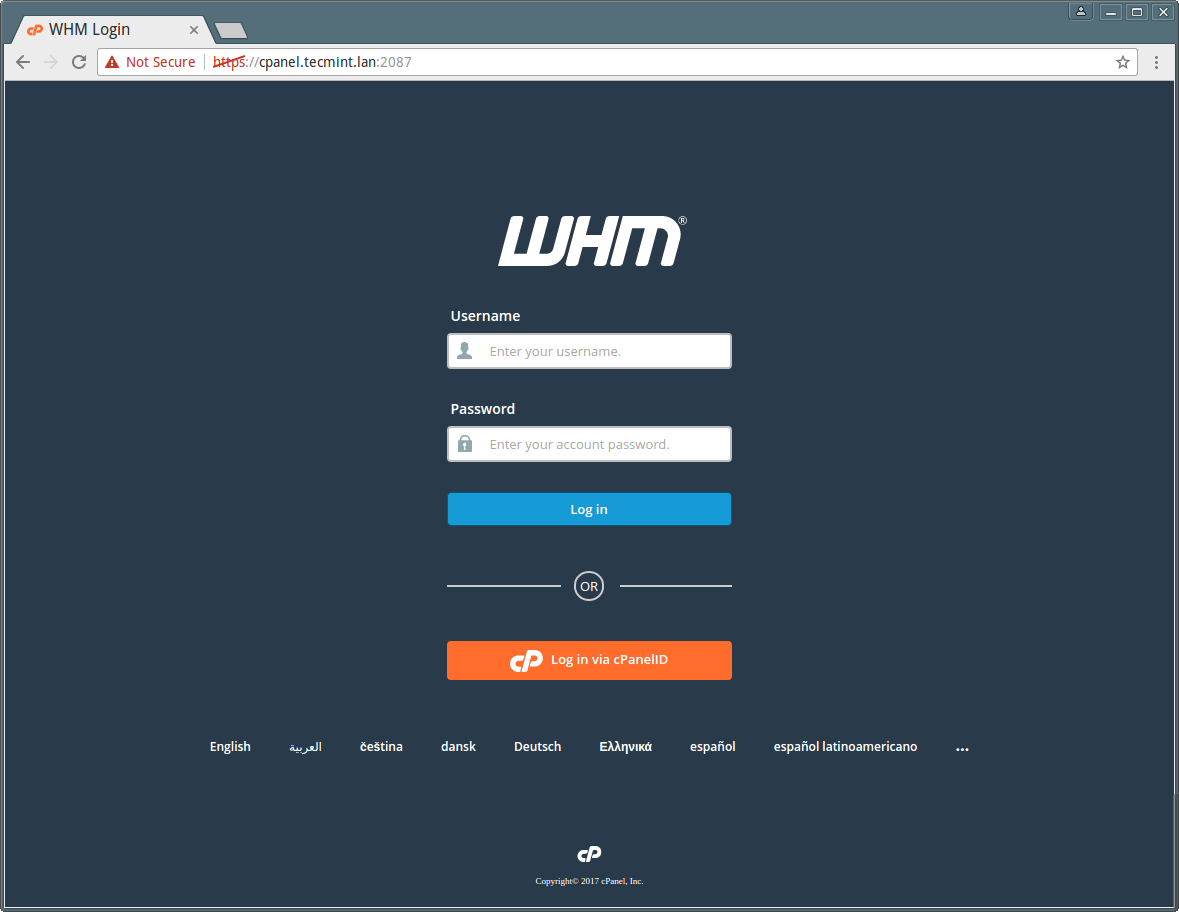

- How setup centos cpanel whm at home server how to#
- How setup centos cpanel whm at home server install#
- How setup centos cpanel whm at home server update#
- How setup centos cpanel whm at home server full#
- How setup centos cpanel whm at home server verification#

PassengerDefaultRuby /usr/local/rvm/wrappers/ruby-2.4.0/ruby cPanel is a linux based web hosting control panel that works through Graphical user interface(GUI).The main advantage of cPanel server is that it can be. PassengerRoot /usr/local/rvm/gems/ruby-2.4.0/gems/passenger-5.1.7 Run the following command to complete the Passenger installation: passenger-install-apache2-moduleĬreate Passenger configuration file: vim /usr/local/apache/conf/nfĪdd the following into it: LoadModule passenger_module /usr/local/rvm/gems/ruby-2.4.0/gems/passenger-5.1.7/buildout/apache2/mod_passenger.so
How setup centos cpanel whm at home server install#
If you are running a cPanel server, run the following command to install Apache 2 development headers: yum install ea-apache24-devel Install Phusion Passenger gem install passengerĪlso, make sure that Apache 2 development headers is installed on the server. Install RVM using the following commands: gpg2 -keyserver hkp:// -recv-keys 409B6B1796C275462A1703113804BB82D39DC0E3Ĭheck the installation: ~]# rvm use 2.4.0 -default Note: Please make sure that your server has atleast 1.5GB of RAM to install Phusion Passenger So install Ruby with RVM to get the latest version of Ruby. As you know Ruby on Rails feature provided by cPanel is an outdated one and we can’t install Phusion Passenger using this Ruby version. We need to install Ruby on Rails to install Phusion Passenger. It handles HTTP requests, manages processes and resources, and enables administration, monitoring and problem diagnosis. Phusion Passenger is an open source web application server.
How setup centos cpanel whm at home server how to#
This post explains how to install Phusion Passenger on cPanel or CentOS.
How setup centos cpanel whm at home server full#
Give it a go today and see if you aren't purchasing a full license well before your trial is up.Install Phusion Passenger on cPanel or CentOS This tool is used by hosting providers across the globe with good reason. You'd be hard-pressed to find a more powerful (and user-friendly) web hosting control panel than cPanel.
How setup centos cpanel whm at home server update#
The above command will update the license on the server and you are good to start managing your server with cPanel. If the server is licensed, go back to the terminal window and issue the command (as root): /usr/local/cpanel/cpkeyclt Point your browser to, enter your server's public IP address, and click Verify License.
How setup centos cpanel whm at home server verification#
Once you've purchased your license, the license verification process isn't nearly as simple as it should be. Once that expires, you have no choice but to purchase and verify a license. Once installed, you should be good to go for the 15 day trial period. There should be nothing in the Setup Wizard to trip you up (it's all fairly straight forward). The IP Addresses section of the Setup Wizard. The steps include:Īs you walk through the wizard ( Figure A), make sure to pay close attention and fill out each completely and correctly. Setup WizardĪt this point, you will walk through a simple setup wizard. When that script completes, you can then log into your cPanel server by pointing a browser to Make sure to access cPanel with the user root and your root password set for the CentOS 7 server. This is where you should go about the business of the day, as this installation will take considerable time (between 30-90 minutes, depending upon your hardware and network connection). Once you've changed to the root user, issue the command sh latest to run the installation script. Next, issue the command su and type your root user password. Now download the official cPanel install script with the following command: curl -o latest -L From that window, install Perl with the command: yum install perl Log into your CentOS 7 server and open a terminal window. Although the installation of cPanel does take considerable time, it is actually much easier than you might think. Your server hostname set in a fully qualified domain name (in the form )ĭon't let that last bit scare you off.Minimum 20 GB Disk Space (40 GB recommended).A public/static IP address (cPanel can not work with a dynamic IP address), so make sure you've configured CentOS 7 with a static address.Outside of that, you'll have to have the following: With that said, let's get to the installation. I will assume you already have CentOS 7 up and running and ready to host cPanel.

I'll be demonstrating how to do this on CentOS 7. If you're hoping to install cPanel on your own server to make administration exponentially easier, let's get that done.


 0 kommentar(er)
0 kommentar(er)
